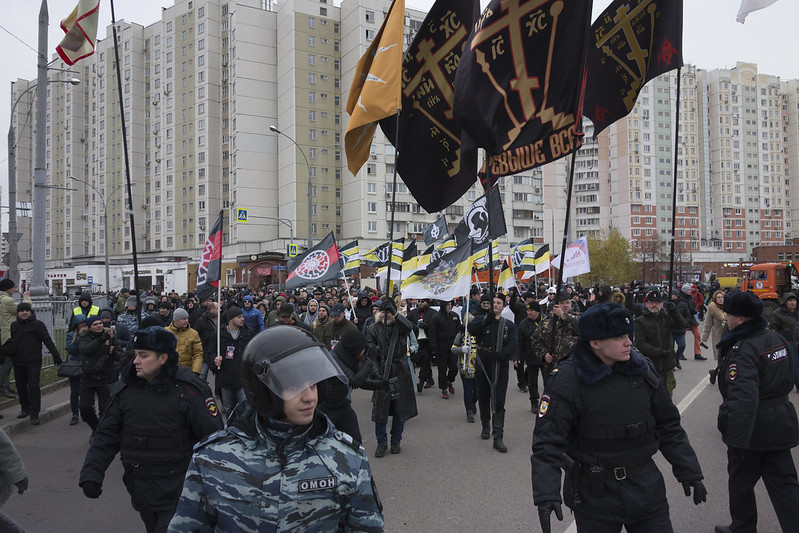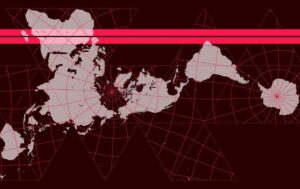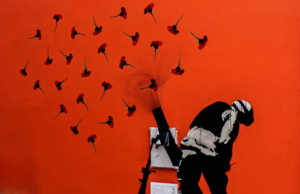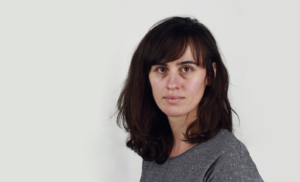Katja Woronina addresses how Russia’s political power system controls and influences political and social movements or parties and how this fact affects the Russian extreme right.
Russia’s system of political power stipulates that political and social movements or parties must not contradict the state apparatus. The Russian extreme right must also bow to this premise. Those who pursue an independent agenda take certain risks and are forced to test the limits of what is permissible or to restrain themselves in order to act within the given framework. Even when interests coincide, room for manoeuvre remains limited. It would be wrong to speak of a stringent ideologically motivated approach on the part of the Russian leadership, or even of a coherent ideology. However, at least since Vladimir Putin’s return to the presidency in 2012, it has certainly relied increasingly on traditionalist and conservative values, with some fascist elements. The philosopher and mastermind of Russian fascism Ivan Ilyin provides theoretical guidelines.
With perestroika and the accompanying freedom of expression, the Russian extreme right experienced an upswing. The Russian National Unity, or RNU, gave rise to a large number of right-wing organisations and movements that were characterised by multiple divisions and conflicts. While national identity processes were taking place in other former Soviet republics (against the backdrop of distancing from Moscow’s central government and newly acquired state independence), the idea of creating a Russian nation-state was far more complicated.
Russian nation-state vs. multi-ethnic empire
Ultimately, a Russian nation-state still does not exist today. Russia is a product of colonial power aspirations and its partial disintegration, but simultaneously has a multitude of ethnic groups and autonomous republics of certain national minorities. Accordingly, a broad spectrum of attitudes and visions can be found in the extreme right. One fundamental question remains on whether Russia’s imperial character is paramount or whether a Russian nationalist definition should be applied. In addition, there are different desires regarding the form of government – from monarchy to a national-democratic form of government – and, of course, attitudes toward the Orthodox Church or the complete rejection of religion, as among pagan neo-Nazis.
Despite all their differences, for a long time, thousands of right-wing radicals from different organisations gathered for the so-called “Russian marches”. These marches were part of the Day of National Unity, which was established in 2005 and is celebrated on 4 November. It was intended as an alternative to 7 November, the former anniversary of the October Revolution. On the one hand, the government thus got rid of an unpopular, symbolic holiday that appealed to social values; on the other hand, this step was also a reaction to the so-called "Orange Revolution" in Ukraine. Right-wing extremist movements and the neo-Nazi scene experienced an enormous boost from the (legal) annual marches and saw this as a signal that they were allowed to take all the liberties in the world. It was the time when neo-Nazis committed dozens of racially motivated murders and killed political opponents every year. The common rejection of migrants from Central Asia and the Caucasus united right-wing groups of different stripes. For a long time, the public discourse on this issue was largely dominated and fuelled by Russian nationalists, until the security apparatus declared it a state monopoly after pogroms in the Biryulyovo district of Moscow in October 2013. Ultimately, dealing with the extreme right has always been a balancing act for state organs.
Many right-wing figures profited from expressions of political loyalty to the state apparatus – be that being allowed to operate undisturbed or receiving financial benefits. Individuals, such as Dmitry Rogozin – who once led the Rodina (“Motherland”) bloc, of whom photos exist performing a Hitler salute, and who openly criticised the Kremlin until the mid-1990s – had a distinguished career: Rogozin was Head of the Russian space agency Roscosmos until mid-July 2022. Others had similar hopes but were side-lined. Dmitry Demushkin, for many years one of the leading figures on the right-wing scene, went from being a convinced National Socialist to a traditionalist nationalist and in between served time in prison. Ilya Goryachev, political leader of the “Combat Organization of Russian Nationalists” (BORN), which is responsible for several murders, is serving a life sentence.
Neo-Nazis as volunteer fighters against Ukraine
The year 2014 marked a break in many respects and resulted in new power constellations. The vast majority of the far right supported the so-called Russian Spring and the separatist movements in the Donbas. In the public perception, however, the far right hardly distinguished themselves with their positions and did not visibly set themselves apart from the mainstream. In the Donbas at that time, several volunteer associations were fighting, which were joined by various neo-Nazis as well as supporters of the National Bolshevik Party. Demushkin and his movement “Russkiye”, on the other hand, described the Maidan as a fight against a corrupt regime and saw the propaganda accompanying the Russian Spring as an attempt to discredit nationalism as such and thus nationalists in Russia as well.
The German Federal Intelligence Service published information suggesting that the Russian extreme right is also involved in the fight against Ukraine today. The Russian Imperial Legion (RIL) is mentioned, an offshoot of the monarchist Russian Imperial Movement (RID), which represents an openly racist worldview. Leader Denis Gariyev has in the past received orders from the Russian security apparatus for his RIL. The Rusich grouping, founded in 2014 and led by notorious neo-Nazi Alexey Milchakov from St. Petersburg, also appears to be involved. Milchakov has apparently fought for the mercenary force Wagner in Syria in the meantime – at least this is suggested by a photo in which he can be clearly identified. In addition, there are recent recordings of him from the Donbas.The war correspondents also include neo-Nazis such as Gleb Erwje, who works for the Russian news agency RIA Novosti.
However, part of the Russian neo-Nazi scene does not sympathise with the so-called People’s Republics in the Donbas or the fight against Ukraine, nor did they support the Maidan of 2014. They are driven by hatred of non-whites, including the homeless. For them, committing individual murders is paramount. They allow themselves to be instrumentalised by the state in another way: in the spring, several neo-Nazis were arrested, including some who had committed crimes. Among other things, they are accused of an assassination attempt on Vladimir Solovyov, probably Russia’s best-known television propagandist. It is a fact that at least some of the militant anti-war actions of the past months were perpetrated by people from the Russian neo-Nazi scene.
After February 24, 2022, when the Russian invasion of Ukraine took place, traditional topics of the extreme right, such as migration issues, receded into the background. But even before that, their high-profile activities had been on the decline, largely due to reduced political freedom in recent years. The right, which has been weakened by internal strife, finds it difficult to make a name for itself when the state is implementing parts of its agenda anyway. This is especially true when it comes to dealing with migration. The extreme right distinguishes itself from the official position on central issues – including the current war against Ukraine – less by questioning the Kremlin’s policies on the content level but rather by criticising their implementation.



